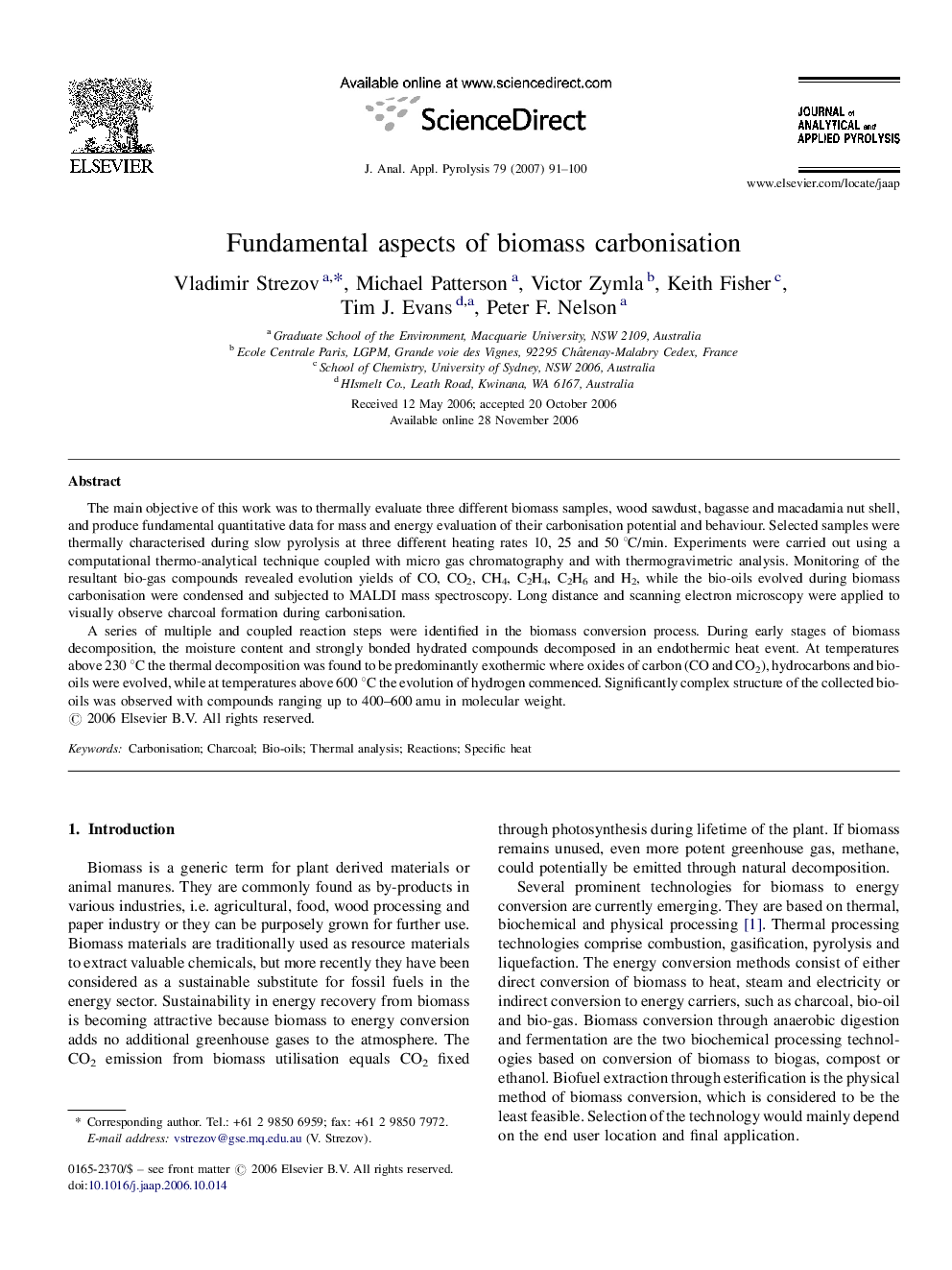| Article ID | Journal | Published Year | Pages | File Type |
|---|---|---|---|---|
| 1197936 | Journal of Analytical and Applied Pyrolysis | 2007 | 10 Pages |
The main objective of this work was to thermally evaluate three different biomass samples, wood sawdust, bagasse and macadamia nut shell, and produce fundamental quantitative data for mass and energy evaluation of their carbonisation potential and behaviour. Selected samples were thermally characterised during slow pyrolysis at three different heating rates 10, 25 and 50 °C/min. Experiments were carried out using a computational thermo-analytical technique coupled with micro gas chromatography and with thermogravimetric analysis. Monitoring of the resultant bio-gas compounds revealed evolution yields of CO, CO2, CH4, C2H4, C2H6 and H2, while the bio-oils evolved during biomass carbonisation were condensed and subjected to MALDI mass spectroscopy. Long distance and scanning electron microscopy were applied to visually observe charcoal formation during carbonisation.A series of multiple and coupled reaction steps were identified in the biomass conversion process. During early stages of biomass decomposition, the moisture content and strongly bonded hydrated compounds decomposed in an endothermic heat event. At temperatures above 230 °C the thermal decomposition was found to be predominantly exothermic where oxides of carbon (CO and CO2), hydrocarbons and bio-oils were evolved, while at temperatures above 600 °C the evolution of hydrogen commenced. Significantly complex structure of the collected bio-oils was observed with compounds ranging up to 400–600 amu in molecular weight.
